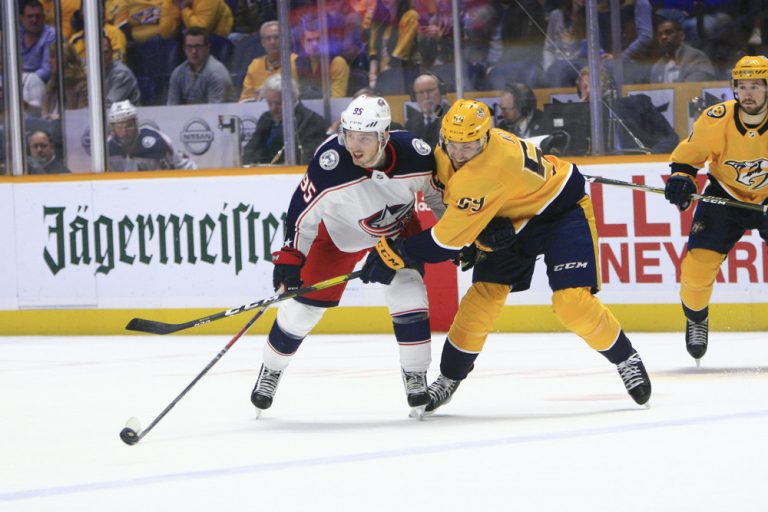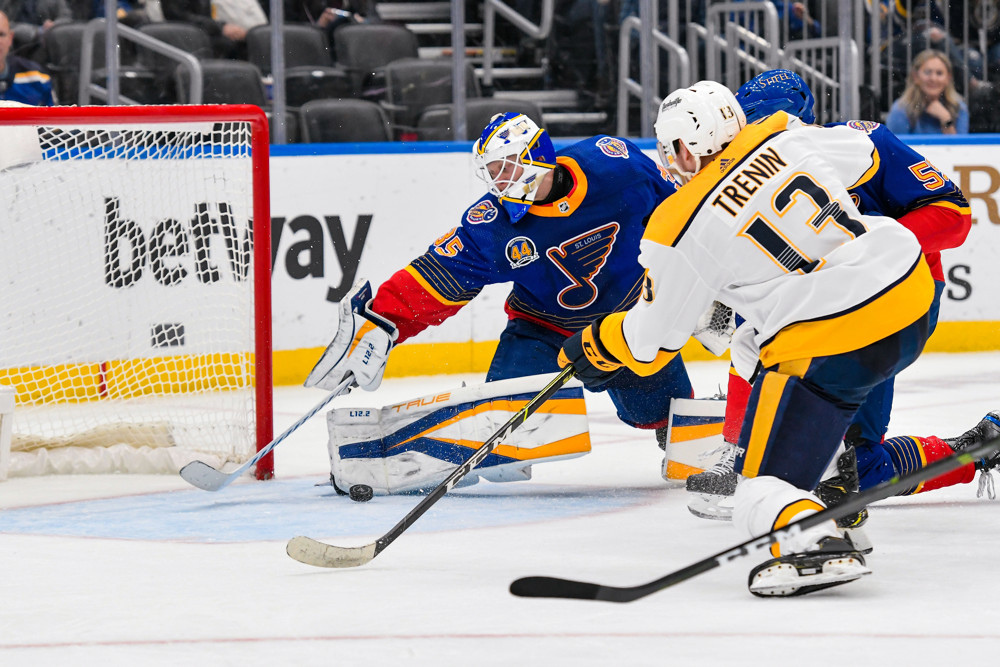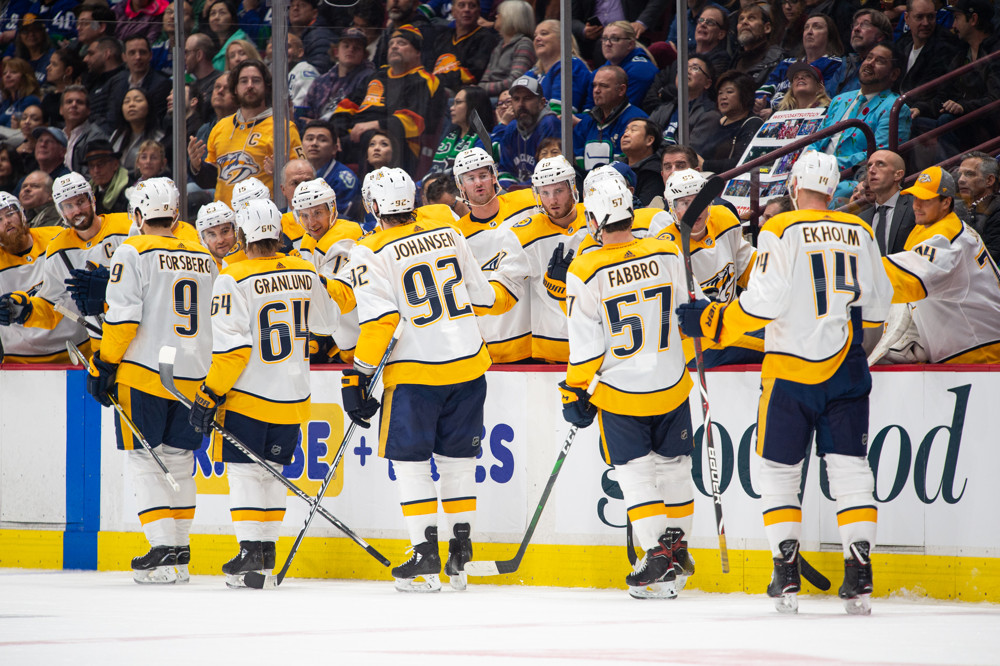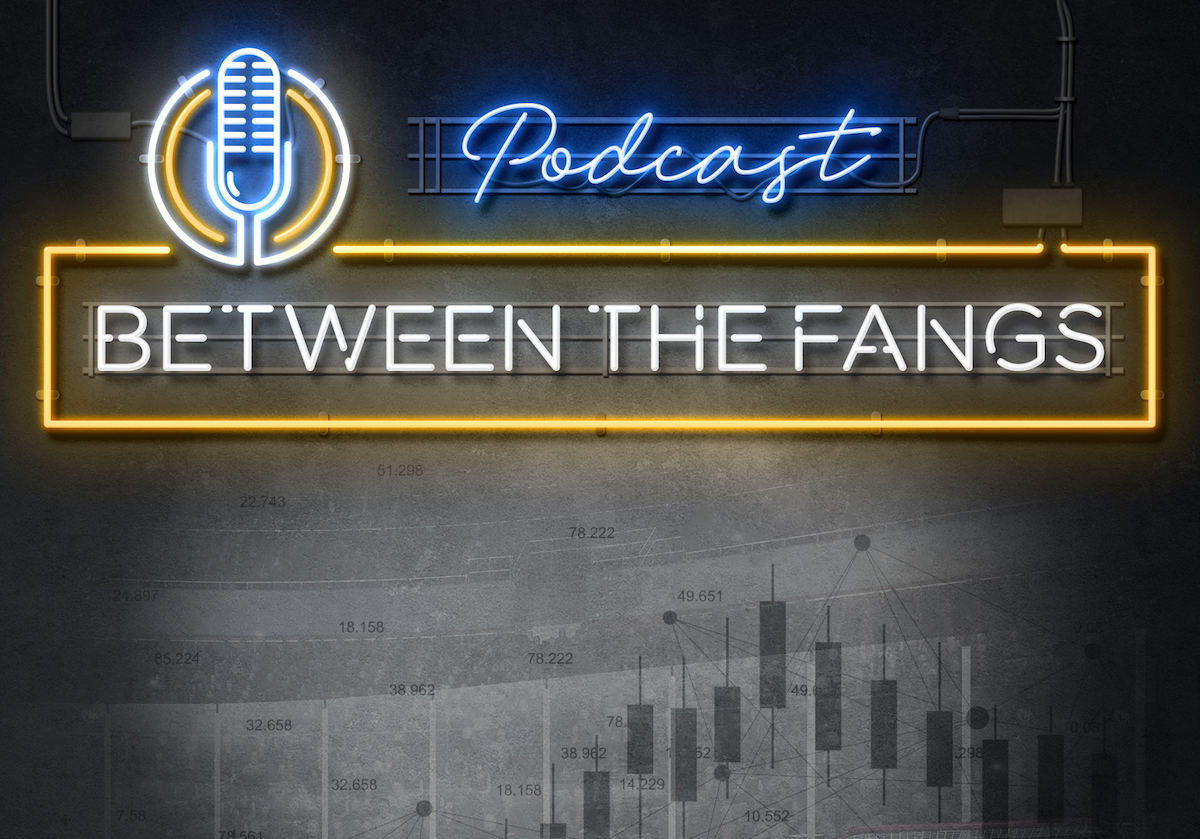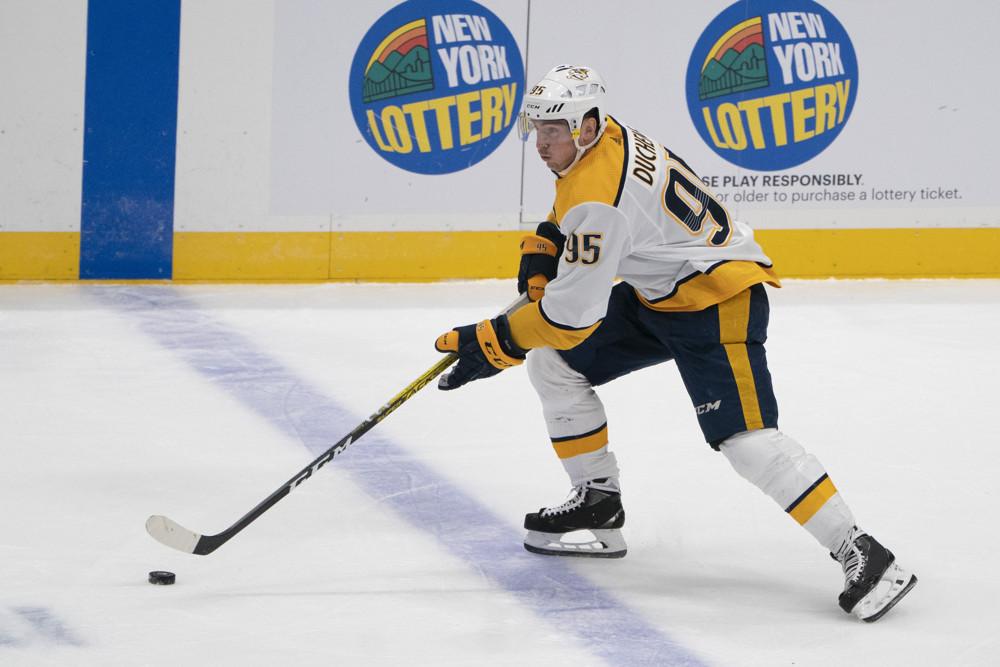
As I write this, Matt Duchene was signed by the Nashville Predators to a surprisingly friendly deal. Seven years at eight million per is about a million less than what everyone expected and I think we’re all equally surprised. The top center in a free agent class usually commands more than any other player, but Duchene was willing to sacrifice money for his preferred destination.
Everyone knows about Duchene’s shooting talent. He’s scored 30 goals twice in his career including this past season while also tying his best point total with 70 in 83 games. The simple stats show that Duchene puts the biscuit in the basket, a highly coveted talent in today’s offense oriented league.

But what about driving play? Scoring is a big part of the equation but despite playing on some truly terrible teams, Duchene has had some talented linemates. What I’ll be looking at today is how much of the heavy lifting Duchene has been doing. The two linemates I’ll be looking at are Mark Stone and Artemi Panarin, both of whom signed for over 9.5 million dollars.
Before we get into these line stats, let’s look at how Duchene has done overall. All stats below are at five on five.
Relatively Speaking

To make things a little bit easier on myself and you fine readers, I decided to make charts for this. I’m nowhere near as talented with Tableau as many others are, so I’m just using Google sheets. That’s right friends, you don’t need to be some ivory tower dwelling duke, anyone can make these “fabulous” charts.
Both charts will compare Duchene to his teams and so, we will only use Duchene’s stats with each team in the comparison. So Duchene’s time in Ottawa won’t affect his Columbus numbers and vice versa. The blue bars will represent Duchene’s numbers while the red will represent how the team did without Duchene on the ice.

None of Duchene’s numbers reach the fifty percent level in Ottawa, but that’s kind of to be expected. That team was truly terrible and Mark Stone was the only one who made it over 50% in most categories without any shelter.

Nevertheless, this is definitely a positive for Predators’ fans as they see Duchene was part of the solution in Ottawa, rather than being a problem. Granted, the fact he shot at 20% while he was Senator is a little concerning as well as the fact he scored 9(!) more goals than expected. Duchene’s ability to get to the dangerous areas helped though, as he alone had 52 high danger chances in 50 games.

Here’s where things start to look a little worse for Duchene. None of his possession marks are above 50% except his goal share, although that’s probably due to his 102 PDO.

Duchene clearly had a tough time adjusting to his new life in Columbus. His numbers immediately dropped from over one point per game to just over a half point per game. Four goals in 23 games hurts after seeing him score 27 in 50, but his luck seemed to regress as he shot 8.82%.
Duchene had an up and down situation compared to who he played with. He was better than the basement-dwelling Senators but failed to meet the standards of the Blue Jackets, a team that squeaked into the playoffs.
Despite playing on a bad and mediocre team, that wasn’t always the case with linemates. Duchene had some bonafide stars on his line for some, but not all of his ice time, and the stats tell an interesting story.
Stoned In Ottawa

Before we begin, I should mention how much I love Mark Stone. I would probably take a bullet for that man, and I have no emotional attachments to the Golden Knights or Senators. The eye test loves him, the stats adore him, and everyone who has ever watched him knows how dominant he can be.
So one of my concerns for Duchene’s recent spectacular season was his linemates and deployment. There was a little sheltering as Duchene started 53.14% of shifts in the offensive zone, but that’s not particularly egregious. What worried me was his quality of competition, as Stone routinely handled the toughest competition while Duchene was left to face second line competition. This miss-match allowed Duchene to pick on weaker players, which worked but unfortunately didn’t last as he moved to Columbus.
Before we get into the WOWY’s, let’s just take a simple look at how Duchene and Stone match up against each other while they were in Ottawa.

As you can probably tell, Stone had a much greater impact on play than Duchene did. Stone was on the ice for more goals for and fewer goals against while playing tougher competition. He’s easily a top five winger in my opinion, but that’s not the point of the article.
Linemates in Ottawa were rarely consistent, but some pairs did stick together. Duchene only played 190 of his 759 total minutes with Stone, but there’s a noticeable difference when the two were joined.

The possession stats speak for themselves, but that drop alone doesn’t tell the whole story. Of course stats are going drop when you separate a league-dominating winger from a good center, but you hope the center doesn’t drop below his season average. Especially when the Stone’s numbers barely drop or rise.

Unfortunately, that’s the case with Duchene as his numbers grew worse the farther he became from Stone. Duchene’s most common linemates were Bobby Ryan and Ryan Dzingel, who played together for 189 minutes together. In that time, they failed to achieve 50% on any possession stats and were actually negative in relative terms to the Senators. Sometimes by as much as 4.51% (goal share).
As we go deeper, the jump between with Stone and without Stone remains comically huge. When Duchene was by himself, his line produced 53.76 shot attempts for per 60 minutes played, that doesn’t sound so bad until you consider that would rank 19th on the Predators between Colton Sissons and Nick Bonino. Even his high danger chances per 60 minutes, the thing that Duchene is especially great at, was only good enough for 10.44 per 60, good enough for 11th on the Predators.
When you add in Stone though, the numbers reach new heights. Duchene with Stone’s 68.18 shot attempts per 60 and 13.89 high danger chances per 60 would both rank fourth on the Predators. We aren’t even going to get into the defensive side of things, because Duchene isn’t lauded for or expected to be all that good at defense, but the jump is similarly astronomical.
It might sound a little odd, but it’s kind of scary that Duchene’s squad scored over 25% of their total goals while Stone was on the ice despite them playing together for less than 20% of their time on the Senators.
It’s to be expected that Duchene would see worse results without Stone on the ice, but the numbers are a bit concerning. I would pay this little mind if Duchene played with Forsberg or Arvidsson, but considering all three are shooters, leaving the JoFA line together is probably for the best.
Alas, Stone wasn’t the only elite winger that played alongside Duchene. Artemi Panarin and Matt Duchene teamed up, and to be quite honest, the results are downright confusing.
Columbus pun (offensive straight jacket?)
As we already discussed, Duchene’s offense hit a brick wall during his tenure with Columbus. That’s not totally his fault though, it often takes good players time to become acquainted with new teammates while also uprooting their life. Because of this as well as a smaller sample size, I would take this analysis with a smaller grain of salt, though it still has value.
Let’s start off on how Duchene was used during his time in Columbus. While Duchene had tougher zone starts in Ottawa, his competition was much tougher in Columbus. He started almost 68% of his shifts in the offensive zone, but his competition’s Corsi was almost two percentage points above what he faced in Ottawa. This differing style took a bit for Duchene to mesh with, but he eventually figured it out.
It also took a while for John Tortorella to figure out lines, but Duchene centered either Dzingel and Josh Anderson or Cam Atkinson and Artemi Panarin. If you want to talk about a gap in talent, I think this might be the biggest we’ve seen in consistent linemates. Although it should be noted that Anderson and Dzingel played most of their minutes in the first 10 games while Panarin and Atkinson were the most consistent in the final 13. To get a better grasp of the talent gap, check out the chart below.

As we get into the weeds, it’s pretty clear to see the effect Duchene had on playing with Panarin. Panarin was a runaway freight train before Duchene came and it shows in the normal possession categories. It should be noted that Panarin started in the offensive zone 78% of the time while Duchene started 60% of his in the offensive zone, but both are so heavily sheltered that it honestly makes me laugh.

Say what you will about deployment, at least Panarin did something with his. Once again Duchene was below average in terms of NHL average and team average but came out with a very positive share of goals scored. Duchene, without Panarin, was on the ice for eight goals for and six against but if you look at expected goals, it’s literally the opposite. Sergei Bobrovsky was on his game when Duchene was on the ice, as he posted a 94.34% save percentage.
It’s a little concerning to see Duchene be outplayed so heavily at five on five, only to be saved by an elite goaltender. Although this is the style that’s “worked” for the Predators for the past few years so maybe he’ll fit right in.
While the stats between Ottawa and Columbus are far from impressive, what I’m about to show you is what really scares me.

The first time I saw those numbers I couldn’t believe them. I literally rebooted my computer and re-open every tab to make sure there wasn’t some kind of error. Those numbers are grotesquely terrible and a huge surprise from Panarin, who produced incredible numbers without Duchene. While I shouldn’t and won’t put all of the blame on Duchene, it’s very surprising to see Panarin’s numbers negatively move towards Duchene’s averages.
What’s most interesting is how nothing really changes about how Panarin is used. The offensive zone starts stay relatively similar (<1% change) and quality of competition stays at Panarin’s usual level. My theory is that Duchene had a tough time adjusting to playing top line competition while also adjusting to new linemates.
I have absolutely no data to back that up due to small sample size, but it’s the only scenario I can picture that doesn’t end in saying that Duchene made Panarin worse.
Going Forward
The Predators hooked their white whale. Matt Duchene is coming to Nashville for a price that isn’t extremely shocking, if still an over payment. I genuinely hope he meshes well with his linemates and goes on to perform up to expectations.
That said, I’m afraid of what expectations could be for the center. 30 goals would be a bit lofty in my opinion, but I’d be happy with him if he scored 25 goals and 50 points, especially considering Peter Laviolette’s system hasn’t been kind towards scorers in the past two seasons.
The point of this article wasn’t supposed to be negative. I just wanted to maybe temper some expectations.
I love Craig Smith and Mikael Granlund. They’re phenomenal second line players, but it’s a little worrying to see how poor Duchene’s numbers sink to once he’s away from a star winger. Not to speak poorly of Smith and Granlund, but I think it’s safe to agree that they’re not Stone or Panarin.
I do think the line can be a consistent scoring threat though. Smith is one of the best volume shooters in the league while Duchene has one of the best shots from anywhere on the ice. Couple that with Granlund’s ability to pass and baby, you got a stew going.
There will be a lot of questions to answer before the season begins, but I’m glad the Predators answered the biggest one first.
In my opinion, Duchene is not one of those players that you can drop in and expect him to be successful. The coaching staff will have to work on putting him in a friendly environment with teammates that compliment Duchene’s skills. It’s not impossible, it’s just unexpected for a player who’s making as much as Ryan Johansen, who has a knack for making everyone around him better.
I truly hope the Predators do everything they possibly can to help Duchene be successful, whatever that may be.


